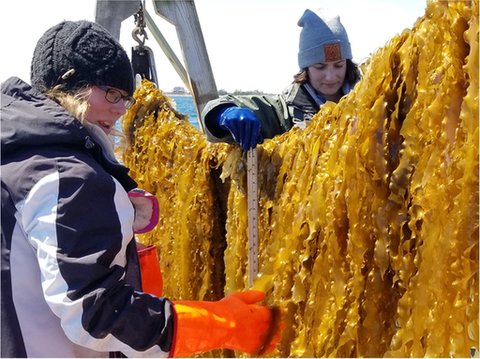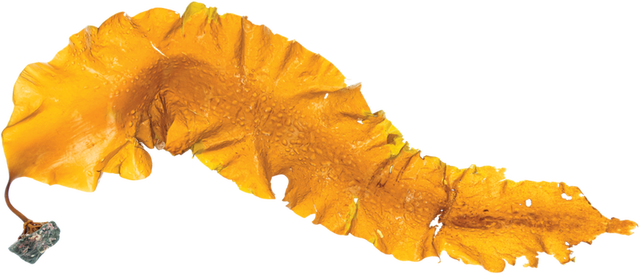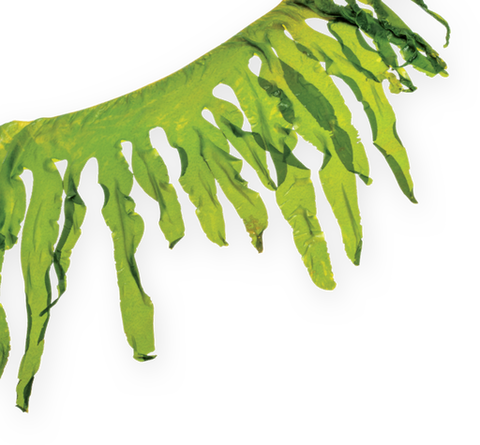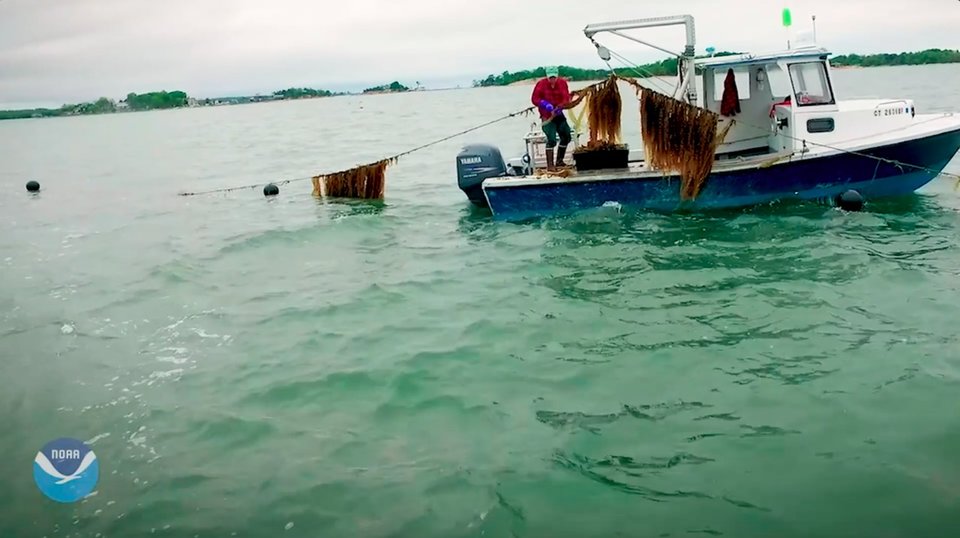
Oceanfarmersusearulertocheckhowmuchtheseaweedhas grown.
Smith’sNewFarm
WhenascientistsuggestedtoSmiththathetrygrowingalargekindofseaweedcalledsugarkelp,Smithwassold.Hethought,“Thisisit!”Thisisthebetterwayhewaslookingfor.Hewouldbecomeanoceanfarmer,growingfoodinoneplaceyearafteryear.Hewouldn'tbefishing,buthecouldstillbeonthewater,ownhisownbusiness,andfeed people.
Aperfect situation!
Well,notquiteperfect.Smithwasn’tsatisfiedwithgrowingonlykelp.Hewantedtoproduceavarietyoffood,andasmuchofitashecould,withinthe40-acreplotofoceanthatheleased,orrented,inLongIslandSound.ThisstretchofwaterisnestledbetweenConnecticuttothenorthandLongIsland,NewYork,tothe south.

sugar kelp
Smithwonderedifhecouldcreateafarmthatusesnotjustthe20acresonthesurfaceorthe20acresonthebottom,buttheentiredepthofthewater.Therewasalottoconsider.Howdoyougrowkelp?Whatotherkindsoffoodcropscanberaisedalongwithkelp?Howshouldeverythingbearrangedinasmalloceanplot?And,howcanthefarmberunsothatitactuallyhelpstheoceaninsteadofharms it?
After15yearsofexperiments,successes,andfailures,Smithcameupwithafarmingmethodthatdoeseverythinghecouldhavehopedfor.Hecallsit3Doceanfarming.Let’sseehowit works.
3DOceanFarming
Takealookatoneversionofa3Doceanfarm.Nowyoucanseethepurposeofthoseblack buoys.Theyholdupropesthatformthebackboneofanunderwaterframework.Theropessupportkelpthatgrowsdownwardinlong,wavyribbons.Scallopsandmusselsgrowinnetsthathangbetweenthekelp.Andbelowitall,oystersgrowincagesonthe seafloor.
Ropesaresuspended2.4meters(8feet) underwater.
Kelpgrowsfast.It’snolongerthanthewidthofacoinwhenplantedinDecember.Byspringharvest,it’s5.4 meters
(18feet) long.
Anchorskeepthebuoysandropesinplace,evenduringviolent storms.
Musselsgrowintube-likenetscalledmussel socks.
Scallopsgrowinhanging baskets.
Oystersandclamsgrowincagesonthesandyormuddy seafloor.

HowDoTheyStart?
Cropsonlandbeginasseedsplantedintheground.Sohowdokelp,mussels,andotheroceanfarm“crops”gettheirstart?It depends.
Forkelp,thefarmercollectssomeofthekelpeachfallandbringsittoafacilitycalledanursery.There,thekelpproducetinyroundspores.Thesporesareattachedtoastringthatisthenrolledaroundatube.Theseedscontinuetogrowonthestringuntil harvest.
It’sdifferentwithmussels.Youngmusselscalledlarvaeswimintheoceanandattachthemselvestopartsofthekelp.There,thelarvaegrowsmall,hardshells.Thefarmerremovesthesebabymusselsandloadsthemintomusselsocks,wheretheypokethroughthemeshastheygrowtofull size.

Kelpsporesgrowaroundatubeina nursery.
Othershellfishusuallystartoutlifeinahatcherybeforebeingmovedtothe3Dfarmtocontinue growing.


